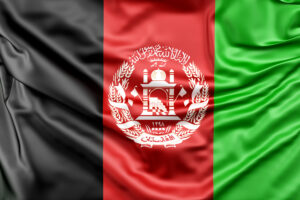
Understanding the internal situation in Afghanistan requires a multifaceted analytical approach that considers historical context, socio-cultural dynamics, political developments, security challenges, economic conditions, and the aspirations of its diverse population. This analytical framework seeks to provide a comprehensive view of Afghanistan’s internal dynamics.
1. Historical Context:
Analyzing the historical context is essential to grasp Afghanistan’s internal dynamics. This includes an examination of past governments, periods of stability, conflicts, and foreign interventions. Historical legacies continue to influence contemporary events.
2. Socio-Cultural Dynamics:
Understanding Afghanistan’s diverse ethnic and tribal composition, as well as its social norms and values, is crucial. Analyzing how these factors shape the roles and expectations of individuals and groups within society helps elucidate internal dynamics.
3. Political Landscape:
Examining the political landscape involves assessing the power structures, governance models, and key actors in Afghanistan. This includes understanding the role of political parties, factions, and the extent of political inclusivity or exclusion.
4. Security Challenges:
Assessing the security situation is fundamental to understanding internal dynamics. This involves analyzing the activities of insurgent groups, the state’s capacity to maintain security, and the impact of external actors on security.
5. Economic Conditions:
Economic factors, including poverty levels, employment opportunities, access to basic services, and income disparities, play a significant role in shaping internal dynamics. Evaluating the economic challenges faced by Afghans helps explain their motivations and grievances.
6. Local and Regional Dynamics:
Internal dynamics are often influenced by regional and local factors. Analyzing the relationships between Afghanistan and neighboring countries, as well as the role of regional powers, is critical to understanding the broader context.
7. Civil Society and Public Opinion:
The role of civil society organizations, the media, and public opinion in shaping internal dynamics should not be overlooked. Their activities, advocacy, and influence on government policies are key elements of the internal landscape.
8. Aspirations and Identity:
Understanding the aspirations and identity of Afghans, including their desire for peace, justice, human rights, and self-determination, is crucial. Analyzing how these factors interact with broader socio-political dynamics helps to anticipate future trends.
9. Vulnerable Populations:
Assessing the vulnerabilities of specific groups, such as women, children, minorities, and internally displaced persons, is essential. These populations often face unique challenges that impact the internal situation.
10. Environmental Factors:
Environmental issues, such as water scarcity and climate change, can exacerbate internal challenges, including resource conflicts and displacement. Examining the environmental dimension is increasingly important.
11. Conflict Resolution and Peacebuilding:
Analyzing ongoing efforts for conflict resolution and peacebuilding is vital for understanding the trajectory of internal dynamics. This includes examining negotiations, reconciliation processes, and the role of international mediators.
12. Future Scenarios:
Finally, an analytical approach should consider potential future scenarios based on current trends, external influences, and internal dynamics. Scenario planning can help anticipate challenges and opportunities.
In conclusion, comprehending the internal situation in Afghanistan requires a holistic analytical approach that considers a multitude of factors and their interactions. This multifaceted perspective is crucial for policymakers, researchers, and practitioners seeking to engage with Afghanistan and contribute to its stability, development, and peace.
